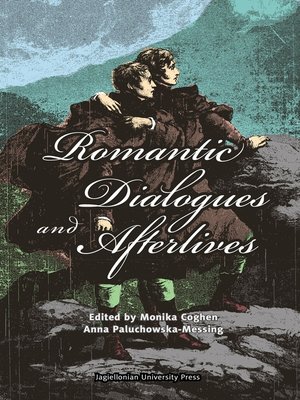
Sign up to save your library
With an OverDrive account, you can save your favorite libraries for at-a-glance information about availability. Find out more about OverDrive accounts.
Find this title in Libby, the library reading app by OverDrive.



Search for a digital library with this title
Title found at these libraries:
| Library Name | Distance |
|---|---|
| Loading... |
Romantic writers often asserted their individuality, but this assertion tended to take the form of positioning themselves in relation to other authors and literary texts. Thus they implicitly acknowledged the rich network of broadly understood poetic dialogue as an important and potent source for their own creativity. When in 1816 John Keats wrote "Great spirits now on earth are sojourning," he celebrated the originality of his contemporaries and the historical significance of his times, pointing to deep interest in "the hum of mighty works" in all the fields of human activity, to which "the nations" ought to listen. Keats's sonnet suggests not only stimulating exchanges between poets, artists and social thinkers in the same language, but also the idea of transnational appreciation and dialogue.
The volume takes up this idea and explores the dialogues of Romantic authors within the wide scope of European and American cultures. Essays by scholars from Germany, Britain, Bulgaria, Poland, Canada and the United States of America examine Romantic writers' responses to their contemporaries, explore their dialogues with the culture of the past, and their interactions across the arts and sciences. They also scrutinize the Romantics' far-reaching influence on later writers and artists, and thus extend the network of artistic exchange to modern times. The volume offers a rich tapestry of interconnections that span across time and space, interlace languages and cultures, and link Romantic writers and artists with their predecessors and successors across Europe and America. The essays in the collection invite the reader to join ongoing dialogues between writers and their audiences, of the past and present.







